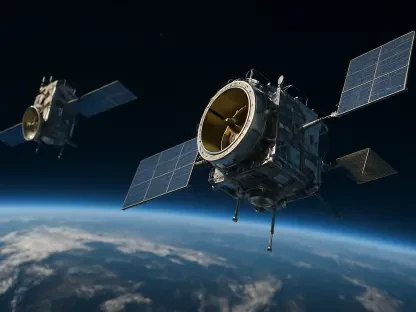In defense missions where seconds decide outcomes and crowded airwaves strangle critical updates, the arrival of dual, IW-capable Network Control Stations promised to reset expectations for how Spain’s UHF SATCOM links could be planned, prioritized, and protected under pressure. Built and integrated to manage Time Division Multiple Access networks across a constellation designed for resilient service, the paired stations were engineered to function as both a primary controller and a full backup, binding continuity and agility into one operational framework. The systems emerged from a rigorous campaign of factory and full-system acceptance tests, marrying Viasat’s network management suite with antennas supplied by Blacktree Technology. Telefónica coordinated the overall program for the Ministry of Defence, while AICOX delivered civil works and local integration, ensuring that deployment matched national requirements. The goal was straightforward: speed access, compress overhead, and expand multi-user reach without eroding reliability.
Inside the new control architecture
At the heart of the deployment sat VISION, a planning and management environment that bridged legacy UHF DAMA and Integrated Waveform services on 25‑kHz channels, reducing typical call setup from roughly a minute and a half to a few seconds with IW. That change altered mission rhythm: operators could reshuffle priorities in real time, shift bandwidth to reflect evolving tasks, and restore paths quickly if conditions changed. The Integrated Waveform Channel Controller layered MIL‑STD TDMA protocols onto 5‑ and 25‑kHz channels, lifting per‑channel density to about 10–14 concurrent users for voice and data. Meanwhile, a broader Network Management Solution enabled remote control from a single terminal, consolidating tasks that once demanded multiple consoles. The redundancy between stations closed a vulnerability often exposed during crises, where maintenance or a localized outage could fracture a network at the worst moment. Together, these elements aligned technology with command intent, not the other way around.
What this means for operations and industry
The full system arrived ahead of SpainSat NG I service, giving operators time to refine procedures, validate fallback modes, and map resource policies before pressure climbed. That schedule mattered, because optimized IW scheduling only pays off when doctrine, training, and mission planning embrace dynamic control. On the industry side, the program demonstrated a template for international collaboration: lab integration in California, antennas from a specialist partner, a national prime for the customer, and an in‑country integrator for infrastructure and sustainment. The practical payoff was twofold—higher user density on scarce UHF, and faster access with fewer manual steps—while the strategic benefit rested in resilience through duplication and centralized oversight. Next steps pointed toward extending remote orchestration across dispersed terminals, refining cross‑bearer policies with X‑ and Ka‑band assets, and hardening cyber baselines. By closing gaps between speed, capacity, and continuity, the rollout had positioned Spain to manage contention rather than endure it.









